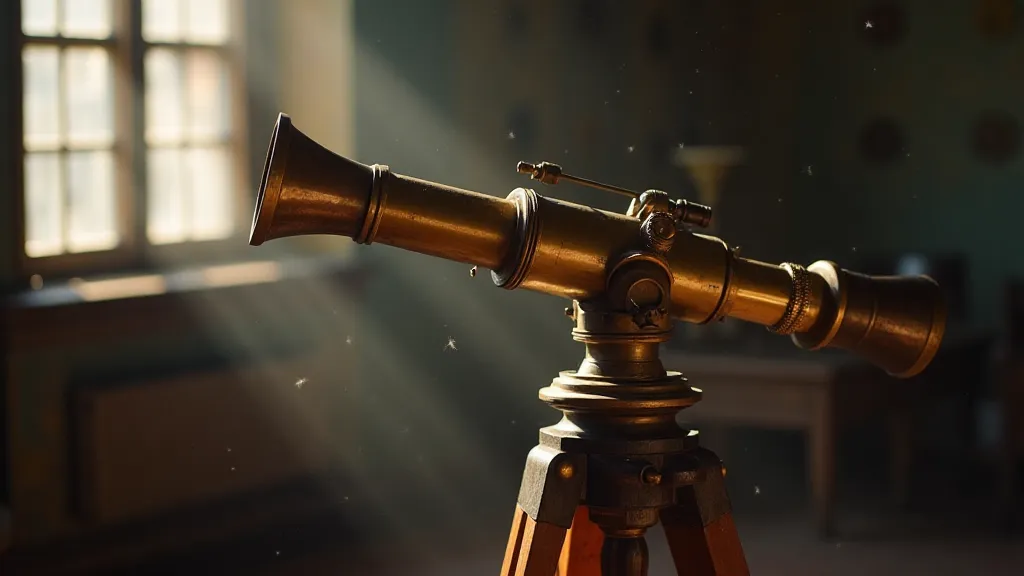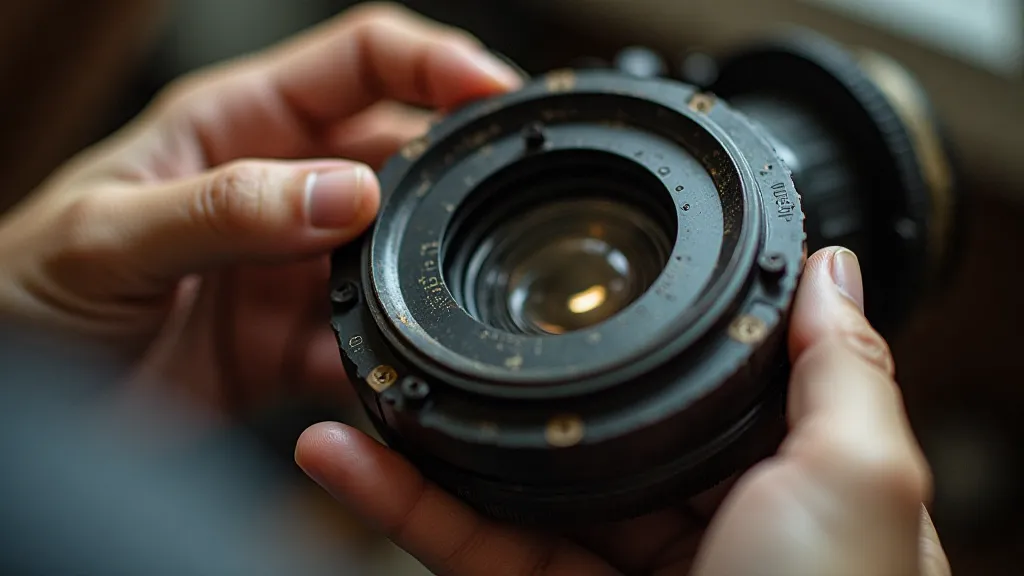Chromatic Aberration's Dance: A Poet's Guide to Refractor Telescopes
There's a quiet romance woven into the history of refractors, a gentle echo of an era when craftsmanship wasn't just a process, but a devotion. Think of antique accordions – the burnished wood, the meticulously crafted reeds, the resonant, slightly melancholic sound. There's a similar beauty, a similar spirit of careful creation, embodied in the older refractor telescopes. They’re not perfect, not in the clinical, mathematically precise way we often demand of modern optics. They have flaws, delightful imperfections that, rather than detracting from the experience, contribute to a uniquely enchanting view of the cosmos. And the most prominent of those imperfections? Chromatic aberration.
Most modern telescopes strive to eliminate chromatic aberration—the phenomenon where different wavelengths of light are refracted (bent) differently, resulting in those tell-tale fringes of color around bright objects. But in older refractors, particularly those utilizing simple lenses, it's an inescapable part of the character.

The Origins of a Rainbow's Whisper
The history of refractors begins with Johannes Kepler, who, in the early 17th century, meticulously described how lenses could be used to gather and focus light. Early astronomers eagerly embraced this new tool, but quickly discovered the problem: those beautiful, sharp images they’re seeking were often framed with a halo of purple or blue fringing. This wasn't an error; it was an inherent consequence of using a single lens to bend light.
Isaac Newton, famously, rejected the refractor in favor of the reflecting telescope, influenced by this same chromatic aberration. He observed that blue light was refracted more than red, and that this difference led to blurred images. This led to his development of the reflector, which uses mirrors instead of lenses, theoretically eliminating this specific issue. But the charm and elegance of the refractor persisted. The development of filters to combat these issues and enhance visibility would come much later, a testament to the ongoing evolution of astronomical tools.
For centuries, astronomers and optical artisans wrestled with this imperfection. Early efforts involved carefully selecting glass types, but a true solution wouldn't arrive until the mid-19th century with the development of achromatic lenses – lenses composed of two or more different types of glass, carefully ground and combined to minimize chromatic aberration.
A Poet's Perception: The Dance of Color
But consider this: even with the advent of achromatic lenses, a certain aesthetic remained, a residue of the older style. And in the refractors that retained their single, “simple” lenses, that chromatic aberration becomes not an annoyance, but a signature. It's a subtle dance of color – a soft blurring around bright stars, a gentle halo around the moon's craters, a whisper of violet on the edges of Jupiter's moons.
Imagine observing Saturn’s rings through such a telescope. It’s not a surgically precise rendering, a clinical photograph of the cosmos. It’s a painterly interpretation, softened by those fringes of color, imbued with a feeling of antiquity and wonder. It’s a visual echo of an era when observation was an act of contemplative reverence. Maintaining these older instruments, and understanding their quirks, is a crucial aspect of appreciating their unique character – something explored further in our article on telescope maintenance.
I remember my grandfather, a quiet man with hands calloused from decades of woodworking, possessed an antique refractor. It wasn't his primary instrument; he was a mostly a reflector enthusiast. But he’s show me it on clear nights when the air felt particularly still. He's explain how those fringes of color were a mark of its age, a testament to the skill of the craftsman who built it so long ago. He didn’t see them as defects. He saw them as personality.
To fully appreciate this visual signature, you have to *look* for it. Don’t try to ignore it. Acknowledge the subtle shimmer around bright objects. Let it inform your perception. It’s a reminder that you’re experiencing the universe through a lens shaped by history, by the ingenuity of past generations.
Restoration & Collecting: Preserving a Legacy
Restoring an antique refractor is a delicate process. While a modern lens replacement might technically eliminate chromatic aberration, it fundamentally alters the instrument's character, stripping it of its historical significance. The value isn’t solely in the optical performance, but in the complete package – the telescope tube, the mounting, the history it represents. The desire for ever-more-accurate optics has led to increasingly complex designs, like those explored in our discussion of hyper-corrected telescopes.

Collectors often seek out refractors in original condition, even with their imperfections. The patina on the brass, the slight scratches on the tube – these are all part of the story. They whisper tales of previous owners, of nights spent gazing at the stars, of a connection to a bygone era. The craftsmanship involved in creating these optical marvels is truly remarkable, a testament to human ingenuity and a connection to a time when precision and artistry were inseparable.
If you're considering collecting antique refractors, a few things to keep in mind: Research is key. Familiarize yourself with different manufacturers, models, and their characteristics. Look for signs of originality – are the markings consistent with the claimed manufacturer? Has the telescope been altered or repaired? Ask questions, and don't be afraid to handle the telescope to assess its condition. The true joy comes from discovering a piece of history, a tangible link to the pioneers of astronomy. The methods of achieving precise focusing and correcting aberrations have evolved significantly, mirroring the broader advancements in scientific understanding.
Beyond the Science: An Emotional Connection
Ultimately, the beauty of an antique refractor lies not just in its optics, but in the emotional connection it fosters. It’s an instrument that invites contemplation, that encourages a deeper appreciation for the vastness of the universe and the ingenuity of humankind. The gentle dance of chromatic aberration isn't a flaw to be eradicated; it’s an integral part of the experience – a whispered reminder of the history we inherit, and the enduring power of observation. The subtle interplay of light and color, often enhanced by carefully selected filters, adds another layer of complexity and beauty to the astronomical experience.
It's about more than just seeing the stars. It’s about feeling the weight of history in your hands, about connecting with a legacy of discovery, and about finding beauty in the imperfections that make each instrument unique. It's about experiencing the cosmos through a lens shaped by human hands, a testament to the enduring quest to understand our place in the universe. The choice between different telescope designs, each with its own set of advantages and compromises, is a crucial decision for any aspiring astronomer.

The legacy of these early telescopes extends far beyond their immediate scientific contributions. They represent a pivotal moment in human history, a time when we first began to systematically observe and understand the universe around us. They inspired generations of scientists, artists, and dreamers, and their influence can still be felt today. The craftsmanship and ingenuity that went into creating these instruments are a testament to the enduring human spirit of exploration and discovery. As we continue to push the boundaries of astronomical observation, we can draw inspiration from the pioneers who came before us, and appreciate the profound impact that these early telescopes have had on our understanding of the cosmos.
Consider the impact of these telescopes on art and culture. The images captured through these instruments, often imperfect and distorted by chromatic aberration, sparked the imaginations of artists and writers, inspiring countless works of art and literature. The sense of wonder and awe evoked by the night sky, intensified by the unique visual signature of these antique telescopes, continues to resonate with us today. The legacy of these instruments extends far beyond the realm of science, influencing our perception of the universe and our place within it.
The journey of astronomical discovery is a continuous process, with each generation building upon the knowledge and innovations of those who came before. The antique refractors, with their subtle imperfections and unique visual character, represent a pivotal moment in this ongoing quest, a testament to the ingenuity and determination of the human spirit. As we continue to explore the vastness of the universe, we can draw inspiration from the pioneers who paved the way, and appreciate the profound impact that these early telescopes have had on our understanding of the cosmos. And with ongoing advancements in optical technology, it’s exciting to imagine what new discoveries await us in the years to come.





